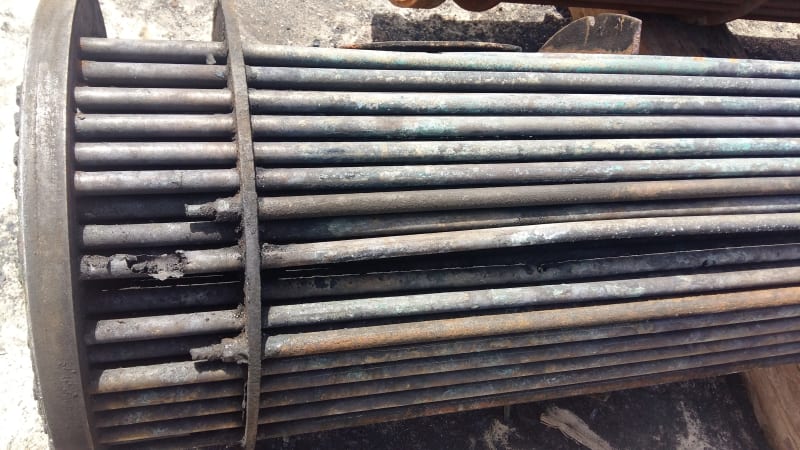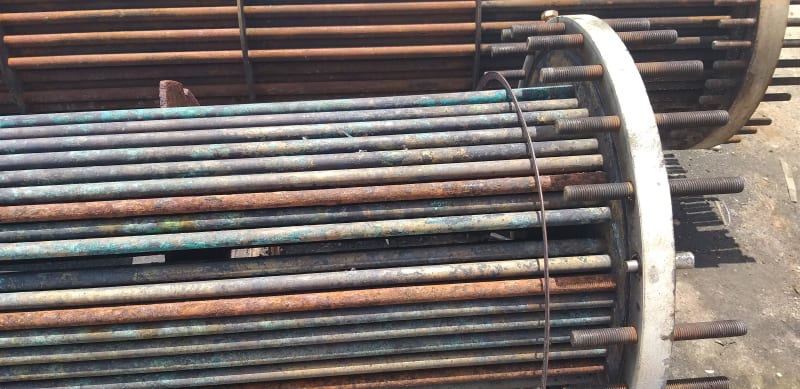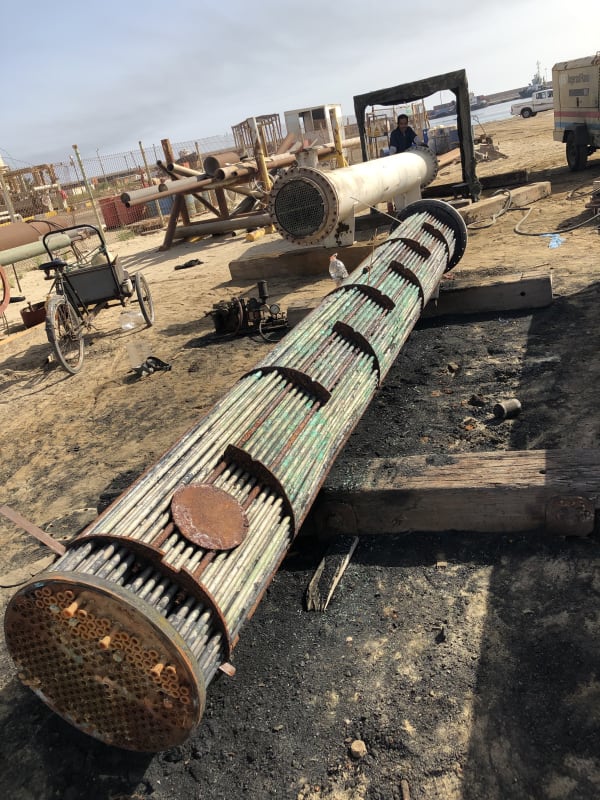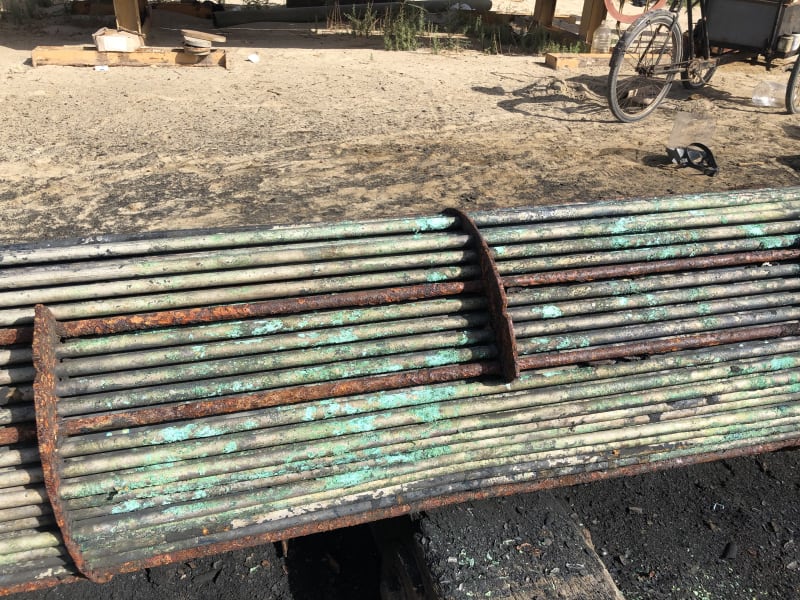Hi alls
in my refinery we have naphtha cooler and facing problem for rapid corrosion and erosion and tubes leak. shell side is naphtha and tube side is seawater. tube side material is copper nickle alloy.
Naphtha inlet temperature is 320 F and out let is 100 F while seawater in let is 70-80 F and outlet is 130 F.
can any one explain main reason of high rate of corrosion and tube leak.
Best Regards
in my refinery we have naphtha cooler and facing problem for rapid corrosion and erosion and tubes leak. shell side is naphtha and tube side is seawater. tube side material is copper nickle alloy.
Naphtha inlet temperature is 320 F and out let is 100 F while seawater in let is 70-80 F and outlet is 130 F.
can any one explain main reason of high rate of corrosion and tube leak.
Best Regards





